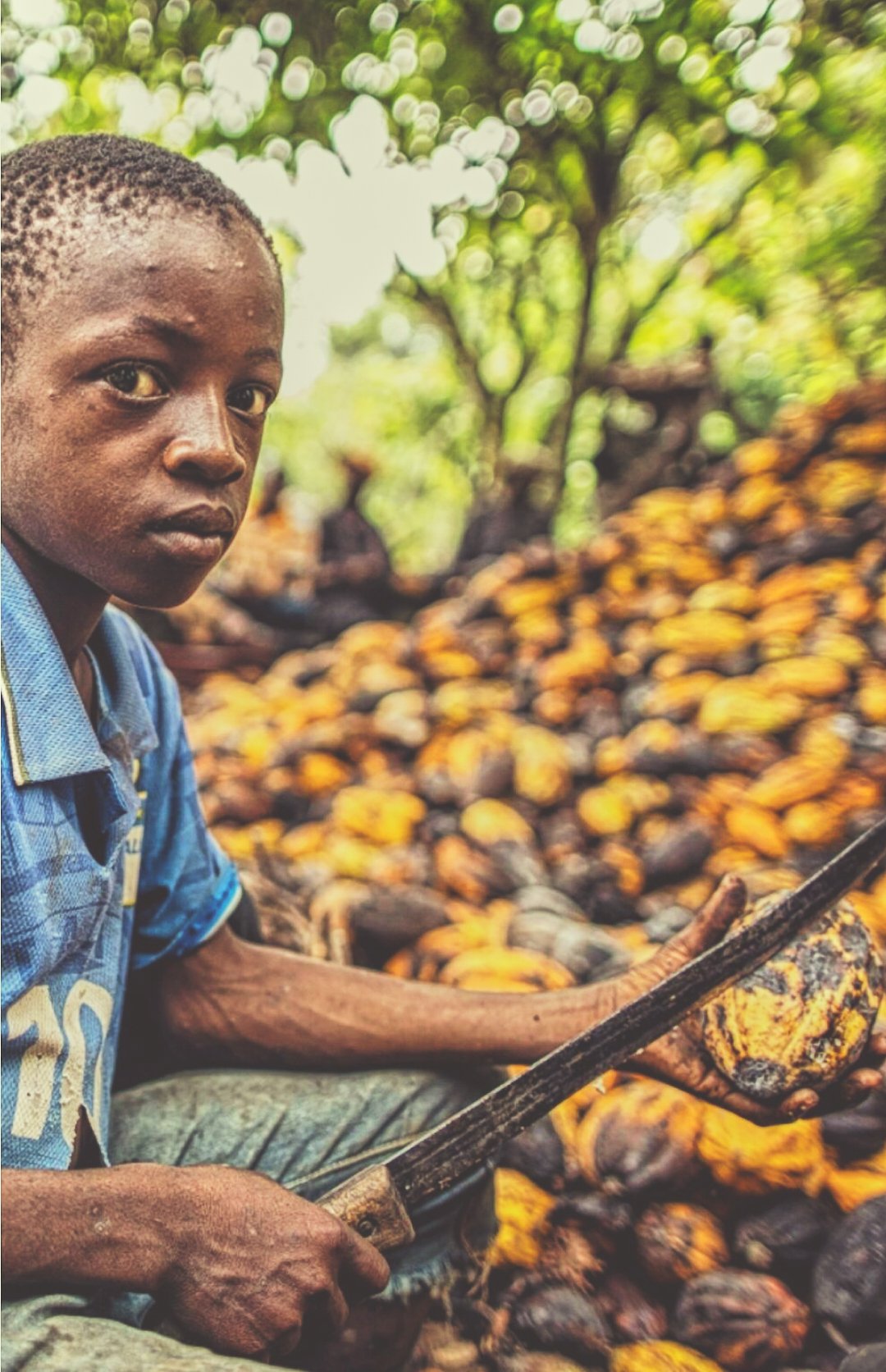#108 Chocolate
Did you know that thousands of children annually are trafficked to work on cocoa farms as slaves? Sadly, it’s true. Enjoying your delectable chocolate bar might taste different knowing it was produced at the hands of a child. The reality is, it is highly likely that a chocolate bar bought in the United States is the product of child labor. So why does a $103 billion-dollar-a-year industry have child labor? Let’s find out!
The Unsweet Truth Behind Chocolate!
Cocoa was initially brought to Western Africa by European chocolate companies seeking to grow it where labor was cheap, or free. Today, over 70% of all cocoa grown comes from West Africa. In this region, cocoa is the main commodity crop grown for export. As the chocolate industry has seen rapid growth over the years, so has the demand for cheap cocoa. As companies like Nestle, Hershey, and Mars pad the pockets of themselves and their shareholders, cocoa farmers and laborers in West Africa struggle for adequate food and shelter. It is through the industry’s exploitation of cocoa farmers that these corporations are able to make record profits. As a result, chocolate companies have little incentive to change the conditions of cocoa farmers and child laborers. Child labor in the cocoa industry will continue as long as we continue to pay farmers a fraction of the cost of sustainable, fair-wage production. Take a look at these statistics on child labor in the chocolate industry.
Facts About The Cocoa Industry:
Over 2 million West African children are engaged in dangerous labor in cocoa-growing regions.
200,000 children work on cocoa farms throughout the Ivory Coast.
Child labor has been found on cocoa farms in Ghana, Ivory Coast, Cameroon, Brazil, Nigeria, and Sierra Leone.
The Current global market value of cocoa is 5.1 billion dollars.
Most cocoa farmers earn less than $1 per day
Often, traffickers abduct young children from small villages in neighboring African countries, such as Burkina Faso and Mali.
Most of the children laboring on cocoa farms are between the ages of 10 and 16, but reports have shown children as young as 5.
Child laborers on cocoa farms work long hours, with some being forced to work up to 14 hours a day.
Children exposed to agricultural chemicals on Ghana and the Ivory Coast’s cocoa farms have grown from 15% of children to approximately 50% of children in the past decade.
Around 30% of children laboring on cocoa farms in the Ivory Coast do not attend school, which violates the ILO’s Child Labour Standards.
In Ghana, 23% of surveyed cocoa laborers reported having performed work without compensation.
Between a quarter and a third of all cocoa is grown under a certification label, such as various fair trade certifications and the Rainforest Alliance/UTZ Certification; however, no single label can guarantee that the chocolate was made without the use of exploitive labor.
How Can I Make An Impact ?
Action 1: Global Goodness
As consumers, we play an essential role in diminishing the food industry’s injustices. If you can’t source child/slave labor-free chocolate, it is imperative to reduce your consumption.
Use Food Empowerment Project’s (F.E.P.’s) chocolate list to be sure the chocolate you buy doesn’t come from child and/or slave labor.
Don’t purchase chocolate that is sourced from Western Africa or Brazil.
Action 2: Planet Protector
All of Action 1
Contact chocolate companies and let them know how you feel about the injustices in the cocoa industry.
Demand transparency from companies that have refused to disclose where they source their cocoa from.
Action 3: Earth Angel
All of Action 1 & 2
Call your local legislation to increase government regulation.
To act on change, tell our government they must first address poverty.
Support The Sweet Solution’s initiative.
Choose to be an Ambassador for Change, and always Spread Loveand Spread Light.


